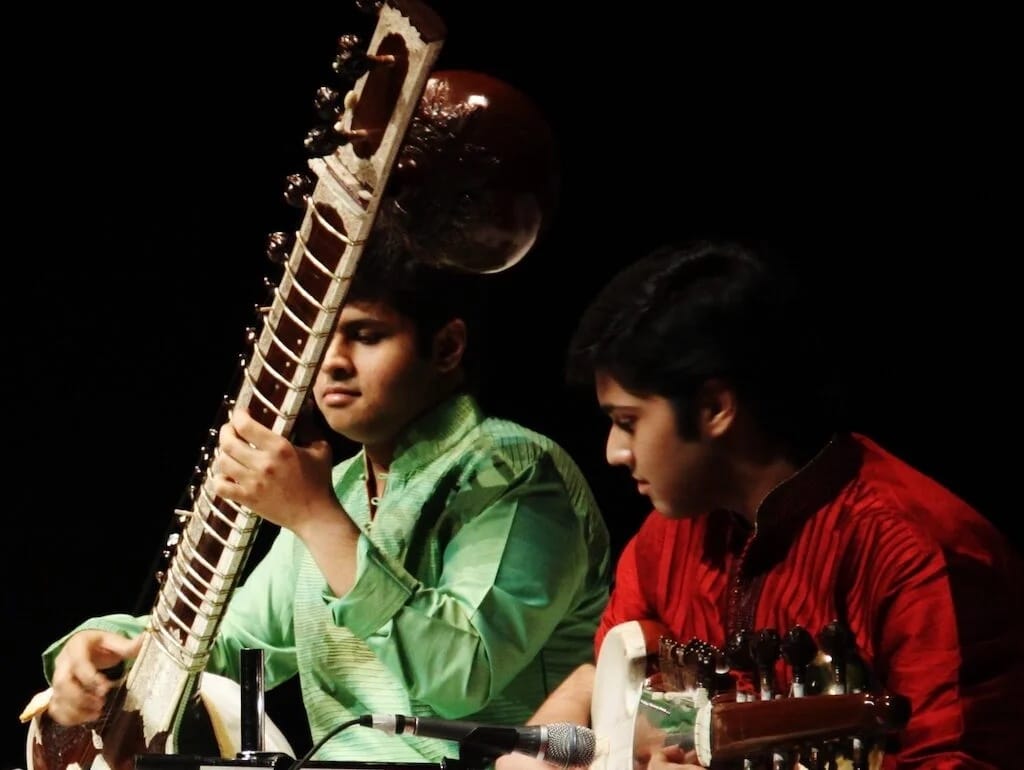Regional Variations in Indian Classical Music: A Comparative Analysis of Hindustani and Carnatic Traditions

Indian classical music stands as a testament to the rich cultural heritage of the Indian subcontinent, characterized by its intricate melodies, complex rhythms, and deep spiritual significance. Within this expansive landscape, two primary classical music traditions have flourished: Hindustani and Carnatic music. Despite sharing common roots, these traditions have evolved distinct stylistic nuances, repertoire, and cultural significance, reflecting the diverse regional identities of North and South India, respectively.
Historical Background
Hindustani and Carnatic music trace their origins to ancient musical treatises, scriptures, and oral traditions dating back several millennia. While both traditions share common roots in the Samaveda, the oldest known musical text in the world, they diverged over time due to geographical, historical, and cultural factors.
Hindustani music, which predominantly flourishes in North India, has been deeply influenced by Persian, Central Asian, and Islamic musical traditions. It evolved under the patronage of princely courts and Sufi mystics, with notable figures such as Amir Khusrau and Tansen shaping its development.
Carnatic music, on the other hand, thrived in the temple-centric culture of South India, with roots tracing back to the ancient Tamil Sangam literature. It has retained a strong connection to religious and devotional practices, with compositions dedicated to Hindu deities and performed in sacred spaces.
Musical Structure and Elements
At the core of both Hindustani and Carnatic music are the fundamental elements of ragas (melodic frameworks) and talas (rhythmic cycles). While the basic concepts of ragas and talas are shared between the two traditions, they manifest differently in practice.
In Hindustani music, ragas are characterized by their expansive melodic structures, allowing for improvisation and exploration of emotive nuances. Talas, too, are flexible, often marked by intricate rhythmic patterns and improvisational interplay between the tabla (percussion) and melodic instruments like the sitar or sarod.
Conversely, Carnatic music emphasizes precision and adherence to established compositions (known as kritis) within specific ragas and talas. Ragas in Carnatic music are defined by precise note sequences and characteristic phrases, while talas exhibit a systematic hierarchy of rhythmic patterns, often performed on instruments like the mridangam and ghatam.
Stylistic Nuances
The stylistic nuances of Hindustani and Carnatic music reflect their regional and cultural identities. Hindustani music is characterized by its emotive depth, intricate ornamentation, and emphasis on individual expression. Performers employ techniques such as meend (glissando), gamakas (ornamental slides), and taans (fast-paced melodic runs) to evoke a range of emotions and moods.
In contrast, Carnatic music emphasizes precision, clarity, and adherence to traditional compositions. Performers focus on the intricate rendering of swara (musical notes), with particular attention to gamakas (grace notes) and rhythmic subtleties. The emphasis on bhava (expression) is evident in the nuanced interpretation of compositions, often accompanied by intricate hand gestures and facial expressions.
Repertoire and Forms
Both Hindustani and Carnatic music boast a rich repertoire comprising various musical forms and compositions, each with its own stylistic and thematic characteristics. In Hindustani music, forms such as dhrupad, khayal, thumri, and ghazal offer diverse avenues for artistic expression, ranging from austere and contemplative to emotive and lyrical.
Carnatic music, meanwhile, features a diverse range of compositions, including varnams, kritis, tillanas, and javalis, each with its distinct rhythmic and melodic structure. The compositions often draw inspiration from Hindu mythology, classical literature, and devotional poetry, serving as vehicles for spiritual contemplation and expression.
Cultural Significance
Beyond their musical intricacies, Hindustani and Carnatic music hold profound cultural and social significance within their respective regions. Hindustani music, with its historical association with princely courts and Sufi mysticism, embodies the syncretic cultural heritage of North India. It has served as a medium for communal harmony and cultural exchange, transcending linguistic and religious boundaries.
Carnatic music, rooted in the temple traditions of South India, occupies a central role in religious and social ceremonies, serving as a conduit for spiritual devotion and cultural preservation. Its intricate compositions and rigorous pedagogical tradition reflect the cultural ethos of discipline, devotion, and artistic excellence.
Contemporary Developments and Cross-Pollination
In the contemporary era, both Hindustani and Carnatic music have witnessed a resurgence of interest and experimentation. Artists from both traditions have explored innovative avenues for collaboration and cross-genre fusion, blending classical elements with jazz, Western classical, and world music influences.
Efforts to preserve and promote regional classical music traditions have also gained momentum, with initiatives aimed at digitizing archives, supporting music education, and fostering cross-cultural dialogue. Despite the challenges posed by modernization and globalization, Hindustani and Carnatic music continue to thrive as vibrant expressions of India’s cultural diversity and artistic heritage.
Conclusion
The comparative analysis of Hindustani and Carnatic music reveals a rich tapestry of regional expressions, each reflecting unique historical, cultural, and stylistic influences. While Hindustani music evokes emotive depth and individual expression, Carnatic music emphasizes precision, tradition, and devotional fervor. Together, these traditions embody the diverse cultural mosaic of India, serving as enduring symbols of artistic excellence and spiritual expression. As custodians of this rich musical heritage, it is imperative to cherish, preserve, and promote these traditions for generations to come.





